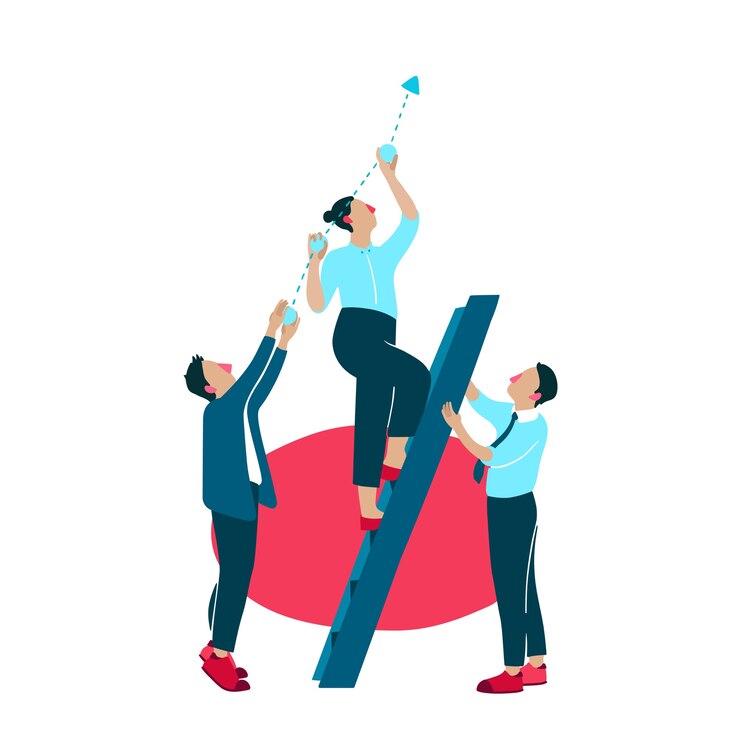Table of Contents
ToggleBuilding and leading a high performing team is essential for any organization aiming for sustained success and innovation. A high performing team is characterized by strong collaboration, a shared vision, and the ability to achieve exceptional results. Here’s a comprehensive guide to building and leading such a team.
1. Define a Clear Vision and Goals
A high-performing team needs a clear direction. As a leader, it’s your responsibility to define and communicate the vision and goals of the team.
- Vision: Paint a compelling picture of the future that motivates and inspires your team. Ensure that it aligns with the organization’s broader objectives.
- Goals: Set SMART goals (Specific, Measurable, Achievable, Relevant, Time-bound). These goals should challenge the team while being attainable.
2. Promote Work-Life Balance
A high-performing team needs to be sustainable. Promoting work-life balance helps prevent burnout and keeps the team motivated.
- Flexible Working Hours: Allow team members to have flexible schedules to balance work and personal life.
- Remote Work Options: Provide the option to work remotely, which can enhance productivity and job satisfaction.
- Encourage Time Off: Ensure that team members take their entitled vacations and breaks. Regular downtime is crucial for maintaining high performance.
- Wellness Programs: Implement wellness initiatives like yoga sessions, mental health days, and fitness memberships.
Day Off
The #1 tracker for your team’s PTO, vacations and absences, Day Off will help you track your team’s leaves and absences in one place. In seconds you will set up your leave policies, approval workflow and enjoy a unique experience. The “Day Off” app concept revolves around providing users a platform to manage their personal, sick, and vacation days more effectively. features aimed at both individual employees and organizations.
- Employees can track their balances up to date information about their available time off.
- You can add unlimited numbers of employees.
- Supports various leave types (e.g., annual, sick, maternity/paternity leave) and Supports Days and Hours balance, you can add unlimited numbers of leave types and leave policies.
- You can Customize week starting day settings according to your company’s operational days.
- Setting up public holidays specific to your country or region, by importing holidays from Google.
- The app can integrate with ( Slack, Google Calendar, Outlook Calendar and Teams)
- Supports Accruals & Carry overs.
3. Assemble the Right Team
Building a high-performing team starts with selecting the right members. Look for diversity in skills, backgrounds, and perspectives to foster creativity and innovation.
- Skills and Expertise: Ensure that each team member brings a unique skill set that complements others.
- Cultural Fit: Evaluate how potential team members align with the team’s values and culture.
- Diversity and Inclusion: A diverse team can approach problems from various angles, leading to more innovative solutions.
4. Foster a Positive Team Culture
A positive culture is the backbone of a high-performing team. It encourages trust, collaboration, and mutual respect.
- Open Communication: Create an environment where team members feel safe to express their ideas and concerns.
- Trust and Respect: Build trust through transparency and consistent actions. Respect each team member’s contributions.
- Recognition and Rewards: Regularly acknowledge and reward achievements to keep the team motivated.
5. Encourage Collaboration and Teamwork
High-performing teams excel in collaboration. Encourage teamwork through various strategies and tools.
- Team-Building Activities: Regularly engage in activities that build trust and camaraderie.
- Collaboration Tools: Utilize tools like Slack, Trello, or Asana to facilitate seamless communication and project management.
- Clear Roles and Responsibilities: Ensure that each member knows their role and how it fits into the bigger picture.
6. Provide Continuous Learning and Development
Investing in your team’s growth is crucial for maintaining high performance.
- Training Programs: Offer opportunities for skill development through workshops, courses, and seminars.
- Mentorship: Pair less experienced team members with mentors to foster learning and growth.
- Feedback: Provide constructive feedback regularly to help team members improve and grow.
7. Empower and Delegate
Empower your team by trusting them with responsibility and autonomy.
- Delegation: Assign tasks based on each member’s strengths and allow them to take ownership.
- Decision-Making: Encourage team members to make decisions within their scope of work.
- Autonomy: Provide the freedom to approach tasks in their own way, fostering innovation and accountability.
8. Measure Performance and Celebrate Success
Regularly assess the team’s performance to ensure goals are being met and to identify areas for improvement.
- KPIs and Metrics: Establish key performance indicators to track progress.
- Performance Reviews: Conduct regular reviews to provide feedback and set new goals.
- Celebrate Achievements: Recognize both individual and team accomplishments to maintain high morale.
9. Adapt and Evolve
The dynamics of a high-performing team are not static. Be prepared to adapt and evolve as circumstances change.
- Flexibility: Be open to new ideas and changes in strategy.
- Innovation: Encourage a culture of continuous improvement and innovation.
- Resilience: Build resilience within the team to handle setbacks and challenges.
Conclusion
Building and leading a high-performing team is a dynamic and ongoing process that requires a clear vision, the right people, a positive culture, and a commitment to continuous improvement. By fostering an environment of trust, collaboration, and growth, you can empower your team to achieve exceptional results and drive your organization forward.
